Unlocking Efficiency: The Ultimate Guide to Choosing a Tractor with Mower for Your Lawn Care Needs
When it comes to maintaining a beautiful and pristine lawn, the right equipment can make all the difference. A tractor with mower is often the best solution for homeowners and landscaping professionals alike, providing a powerful and efficient way to tackle large grassy areas. This ultimate guide aims to unlock the secrets of choosing the perfect tractor with mower for your specific lawn care needs. We will explore essential factors, including cutting width, horsepower, and maneuverability, ensuring that you make an informed decision that enhances your mowing experience. Whether you're a seasoned gardener or a newcomer to lawn maintenance, understanding how to select the best tractor with mower can significantly boost your productivity, save time, and ultimately lead to a more beautiful landscape. Join us as we delve into the key features and considerations to help you find the ideal solution for your lawn care challenges.
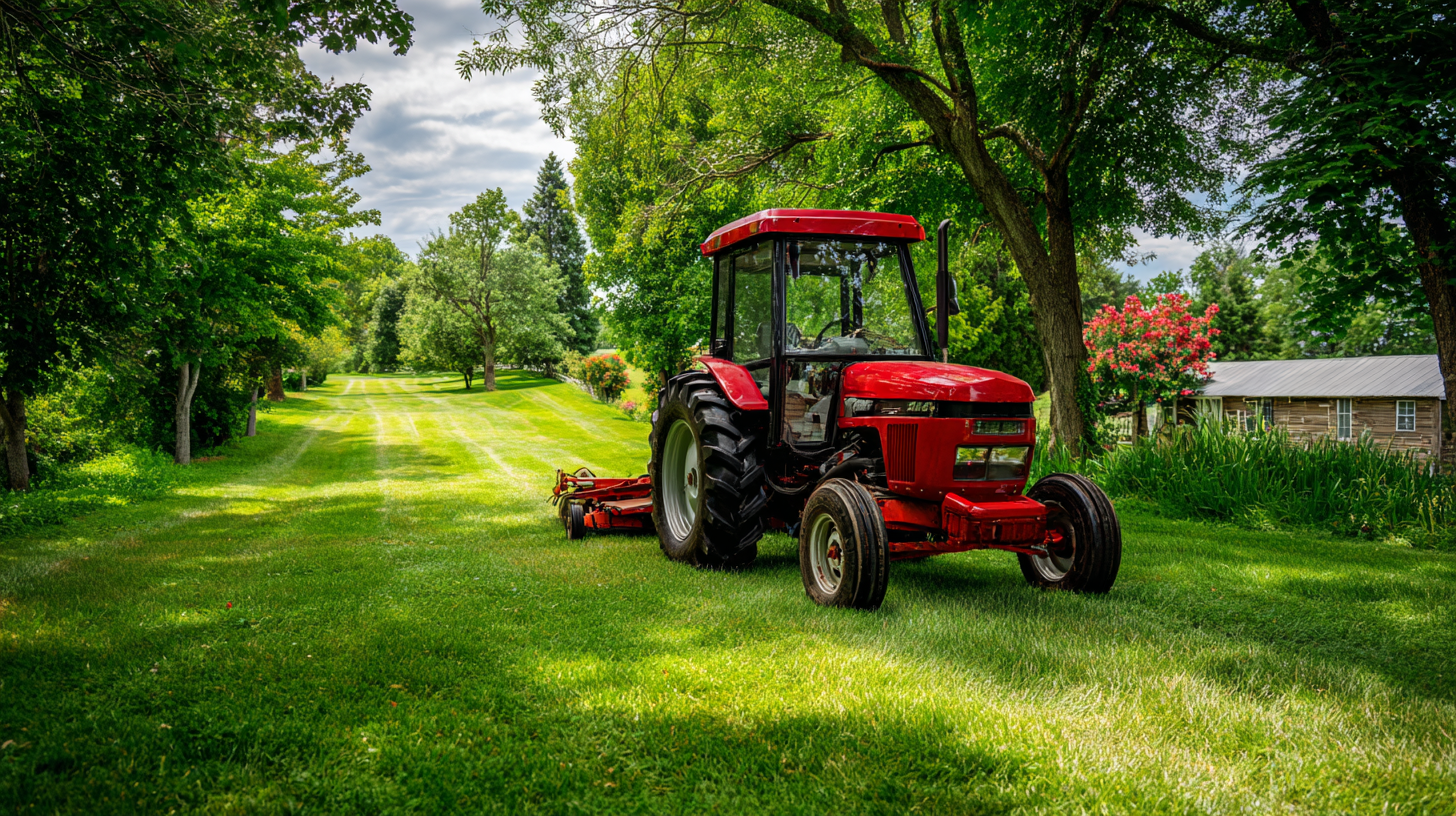
Understanding Your Lawn Care Needs: Assessing Size and Terrain
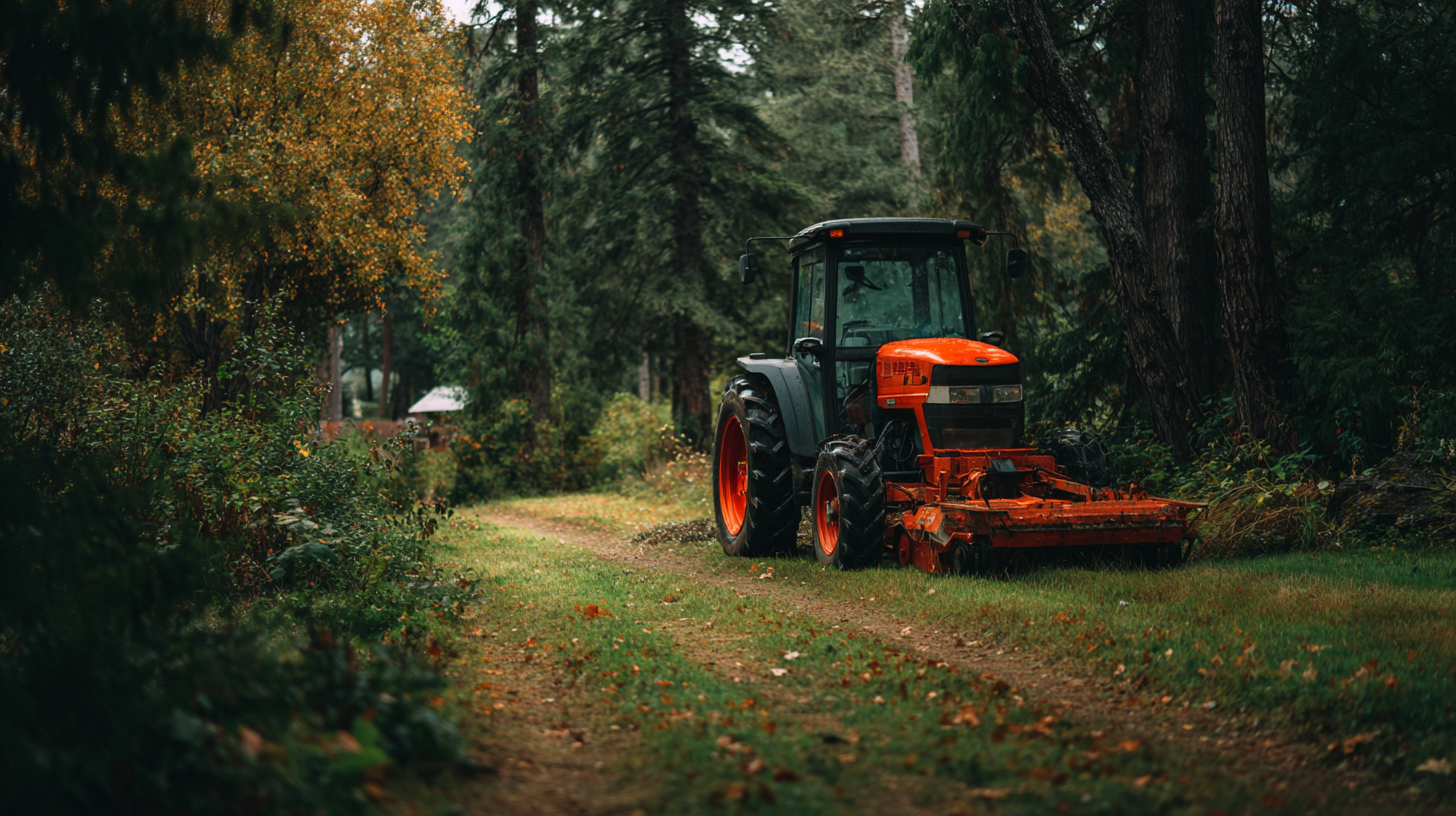 When selecting a tractor with mower for your lawn care, understanding the size and terrain of your property is crucial. The dimensions of your lawn significantly influence the type of tractor you should choose. For larger properties, a powerful tractor equipped with a wide mower deck can save you time and reduce operational costs. Conversely, smaller lawns may benefit from a compact tractor that offers maneuverability and ease of storage, allowing you to navigate tight spaces without difficulty.
When selecting a tractor with mower for your lawn care, understanding the size and terrain of your property is crucial. The dimensions of your lawn significantly influence the type of tractor you should choose. For larger properties, a powerful tractor equipped with a wide mower deck can save you time and reduce operational costs. Conversely, smaller lawns may benefit from a compact tractor that offers maneuverability and ease of storage, allowing you to navigate tight spaces without difficulty.
Terrain also plays a pivotal role in the decision-making process. If your lawn features steep hills, rocky areas, or uneven ground, a tractor with strong traction and stability is essential to prevent slippage and ensure safety while mowing. Additionally, consider whether your property has obstacles such as trees, flower beds, or fences that would require a more agile machine. By assessing both the size and terrain of your lawn, you can make a more informed decision, ensuring that the tractor you choose not only meets your lawn care needs but also enhances the overall efficiency of your maintenance routine.
Essential Features to Look for in Tractors with Mowers
When choosing a tractor with a mower for your lawn care needs, understanding essential features can significantly enhance efficiency and comfort. One of the most critical aspects to consider is the type of mowing system, such as whether to go for a lawn tractor or a zero-turn model. Recent reviews show that zero-turn mowers can save time due to their maneuverability, particularly useful for maintaining larger areas of land. In tests involving over 30 different mowers, performance data indicated that zero-turns typically reduce cutting time by up to 30% compared to traditional lawn tractors, making them an excellent choice for extensive properties.
Another important feature to look for is technological advancements. Models like those with advanced touchscreen controls and independent suspension systems provide not only ease of use but also increased comfort during operation. Additionally, the latest trends emphasize energy efficiency, with battery-powered options gaining traction due to their quiet operation and reduced user fatigue, allowing homeowners to manage their lawns more effectively. Reports indicate that transitioning to electric models can cut down operating costs significantly, making them a sustainable choice for long-term lawn care.
Unlocking Efficiency: The Ultimate Guide to Choosing a Tractor with Mower for Your Lawn Care Needs - Essential Features to Look for in Tractors with Mowers
| Feature | Importance | Recommended Specifications | Notes |
|---|---|---|---|
| Engine Power | High | 15-25 HP for residential | Higher HP for larger lawns |
| Cutting Width | High | 30-60 inches | Wider cut saves time |
| Transmission Type | Medium | Automatic or Hydrostatic | Easier operation |
| Deck Material | High | Steel or reinforced plastic | Durability matters |
| Mower Type | High | Rotary or Reel | Choose based on lawn type |
| Weight | Medium | 500-1200 lbs | Stability vs. maneuverability |
| Warranty | High | 2-4 years | Protection against defects |
Comparing Mower Types: Deck Sizes, Blade Numbers, and Cut Quality
When choosing a tractor with a mower for your lawn care needs, it’s essential to consider the types of mowers available, as well as their features like deck sizes, blade numbers, and cut quality. Deck size directly influences the efficiency of your mowing; larger decks can cover more ground quickly, making them ideal for expansive yards. On the other hand, smaller decks offer better maneuverability, which is crucial for trimming around trees and flower beds in smaller spaces.
Blade count also plays a significant role in cut quality. More blades often translate to a finer, cleaner cut, which is especially important for achieving a well-manicured lawn. Moreover, the technology behind mower engines—whether gas or battery-powered—affects the overall experience. Battery-powered mowers are gaining traction due to their ease of use and low noise levels, while traditional gas engines provide robust power for larger, tougher jobs. As you evaluate your options, consider how these factors align with the specific needs of your lawn, ensuring a choice that maximizes efficiency and satisfaction in your lawn care routine.
Evaluating Budget Options: Balancing Cost with Performance
Selecting the right tractor with a mower for lawn care involves careful budgeting alongside performance considerations. According to a report by the Outdoor Power Equipment Institute (OPEI), the lawn care equipment market is expected to reach approximately $10 billion by 2025, highlighting the growing demand for efficient mowing solutions. For homeowners, understanding this market landscape is crucial when balancing cost with the desired features of a tractor.
When evaluating budget options, it's essential to consider not only the initial purchase price but also the long-term operational costs. A study from the National Institute of Standards and Technology (NIST) indicates that investing in more efficient mowers can lead to savings of up to 30% in fuel consumption over five years. This metric is significant for maintaining a cost-effective lawn care routine. Thus, while the upfront cost may be higher for certain tractors, their performance and efficiency can lead to greater savings in the long run, benefiting both the lawn and the owner's wallet.
Maintenance and Parts: Ensuring Longevity and Efficiency in Your Purchase
When investing in a tractor with a mower for lawn care, understanding the maintenance and part considerations is crucial for ensuring longevity and efficiency. According to the American Society of Agricultural and Biological Engineers (ASABE), regular maintenance can extend the lifespan of commercial mowers by up to 25%, significantly reducing long-term costs. Key maintenance tasks include checking fluid levels, sharpening blades, and inspecting belts for wear. Creating a routine maintenance schedule helps ensure that your machinery remains in peak condition, allowing for smoother operation and better results.

Tips: Always keep detailed records of maintenance performed, as this can help identify patterns of wear and predict future needs. Additionally, consider investing in high-quality, OEM (original equipment manufacturer) parts, which have been shown to perform better and increase the lifespan of the equipment compared to generic alternatives. A report by the Equipment and Engine Training Council noted that using OEM parts can lead to a 30% increase in reliability.
Understanding the parts of your tractor and mower is equally vital. Familiarizing yourself with components such as the engine, transmission, and cutting deck can assist you in diagnosing issues early. A study published by the Agricultural Equipment Manufacturer’s Association (AEMA) highlighted that 70% of breakdowns are due to overlooked mechanical problems. Regular checks and proactive replacements can prevent costly repairs and downtime.
Related Posts
-
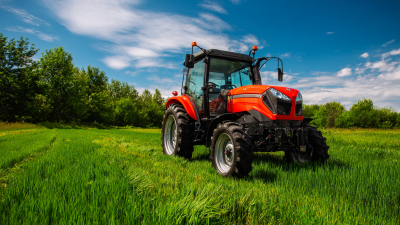
What is a compact tractor and how it revolutionizes modern farming globally
-

Essential Checklist for Choosing the Right Small Front Loader Tractor
-
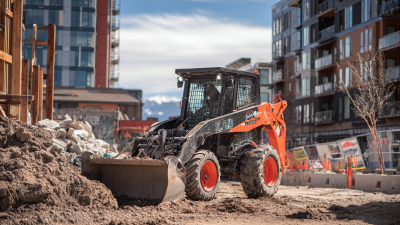
Why Skid Loaders Are Essential for Modern Construction: Exploring Industry Trends and Efficiency Stats
-
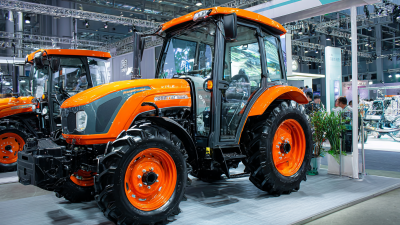
Exploring the Future of Small Compact Tractors at the 138th Canton Fair 2025: Industry Insights and Trends
-

How to Maximize Efficiency with Your Hay Baler for Higher Crop Yields
-
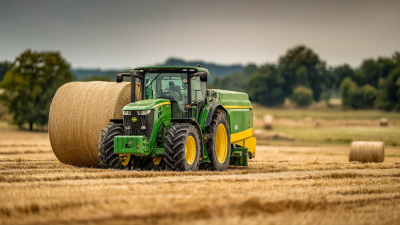
How to Choose the Best Round Baler for Your Farm Based on Yield and Efficiency Insights